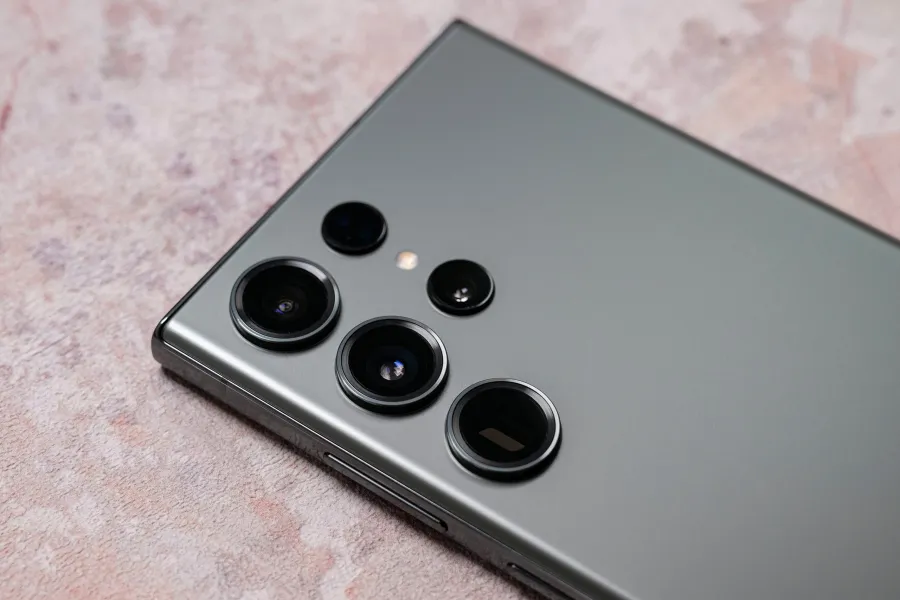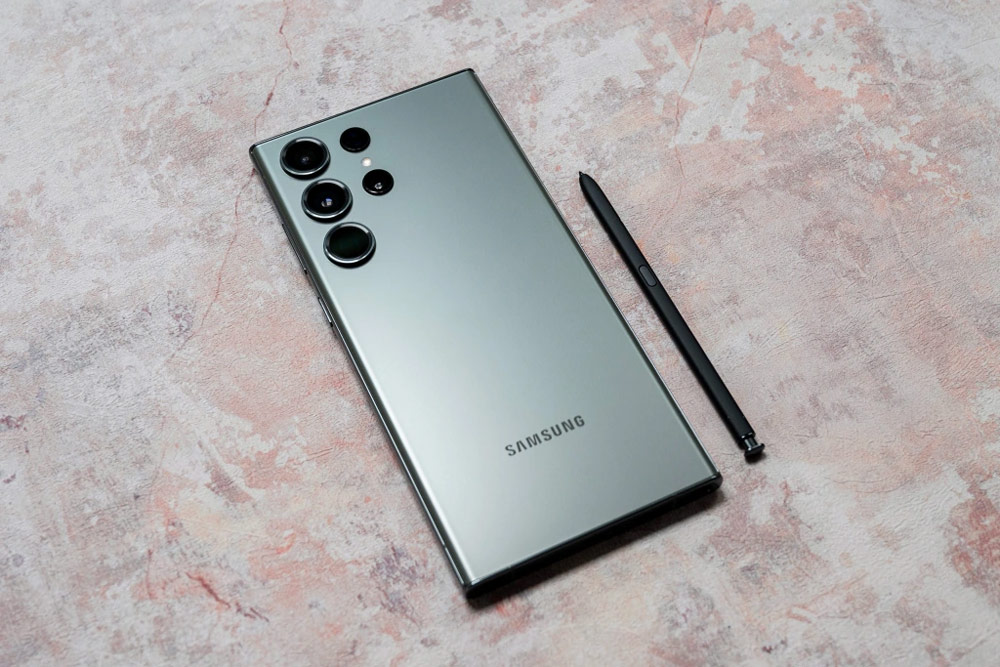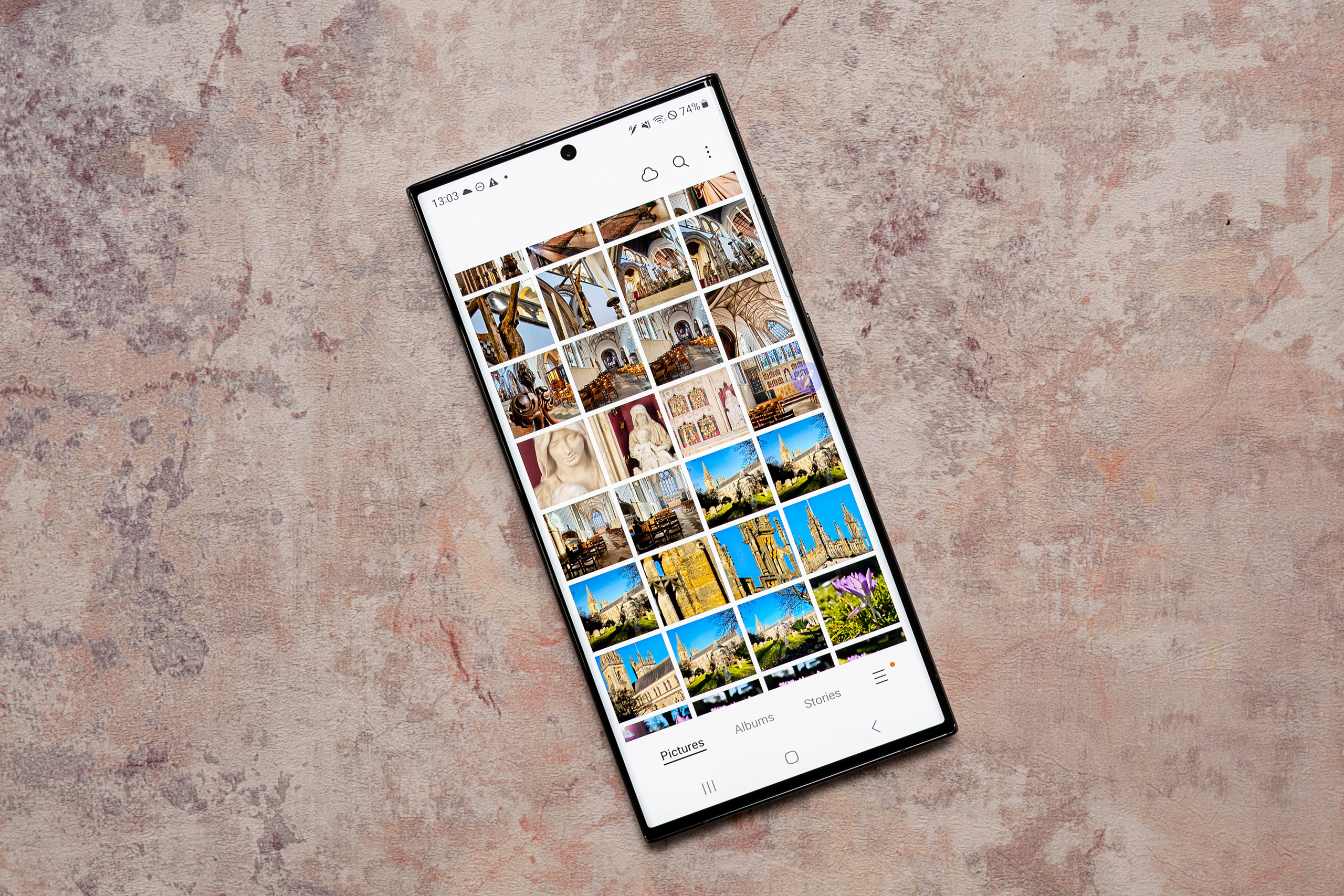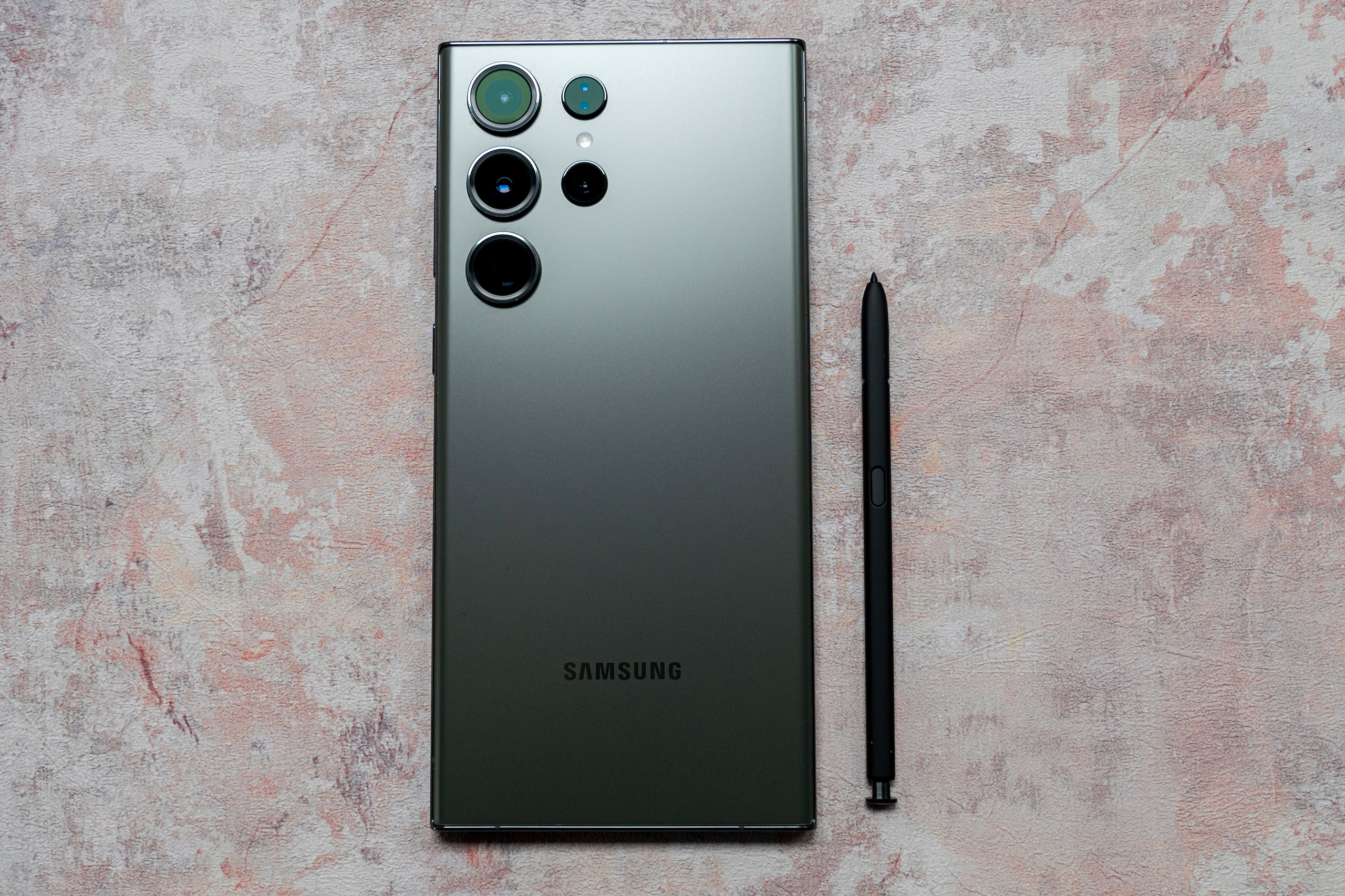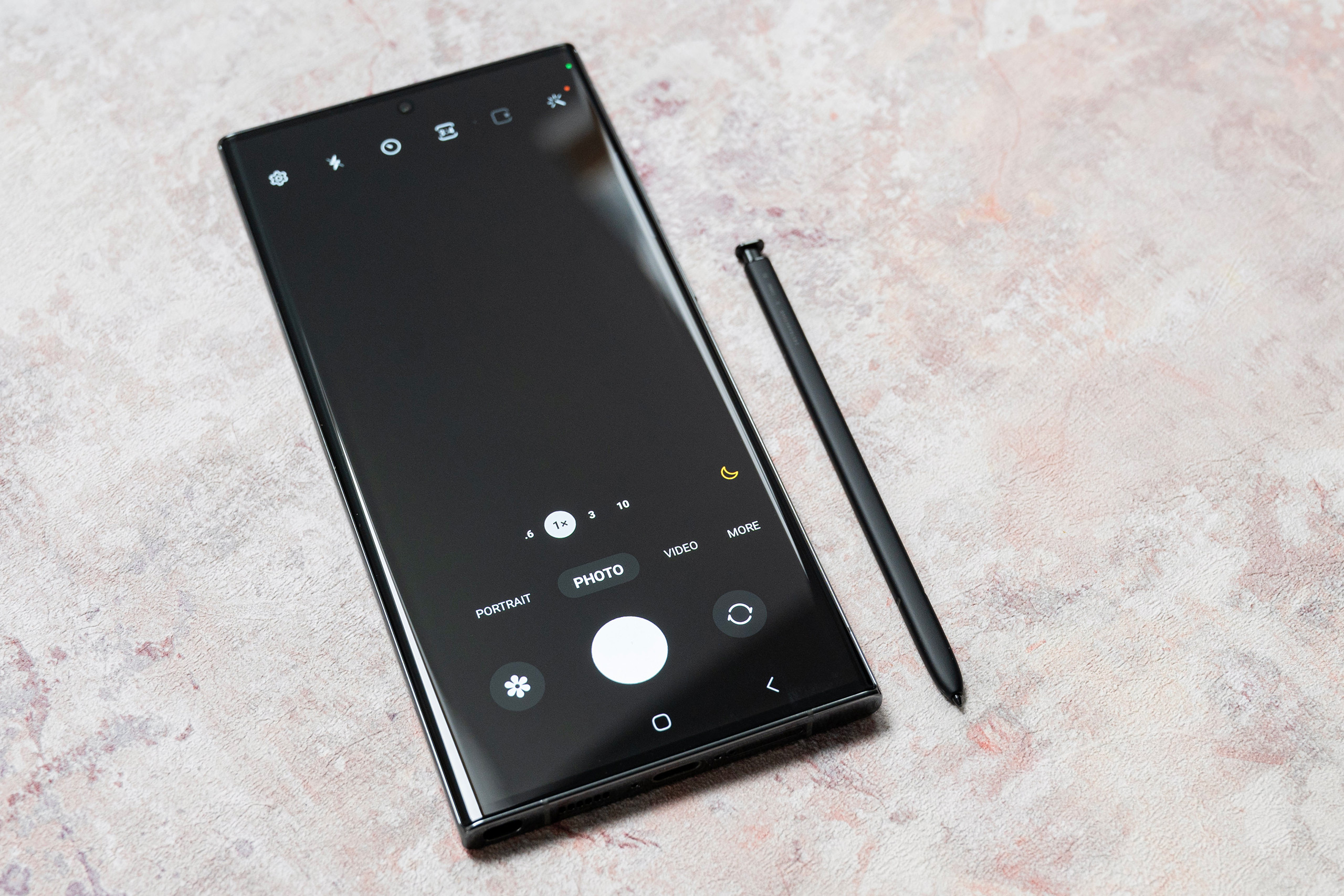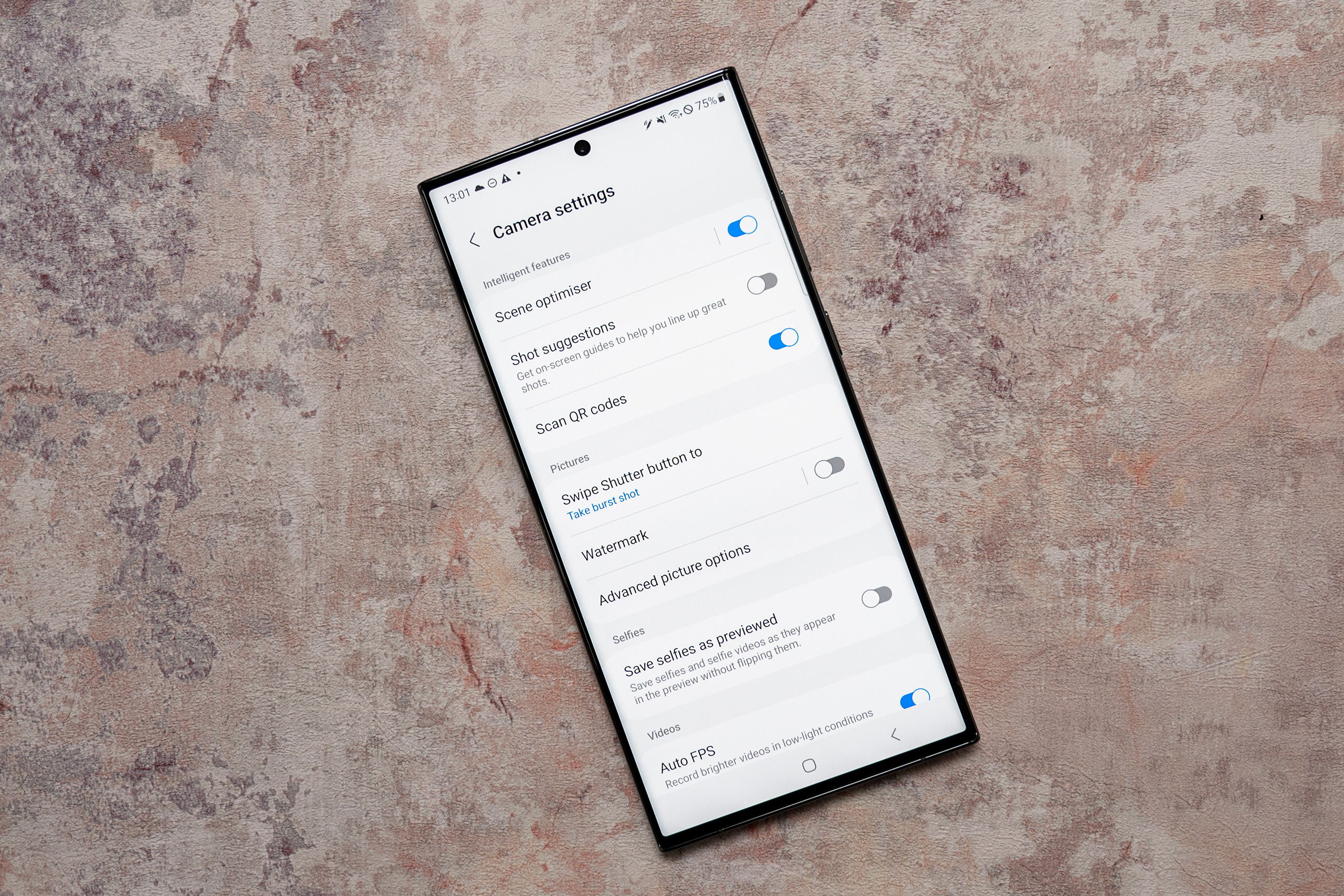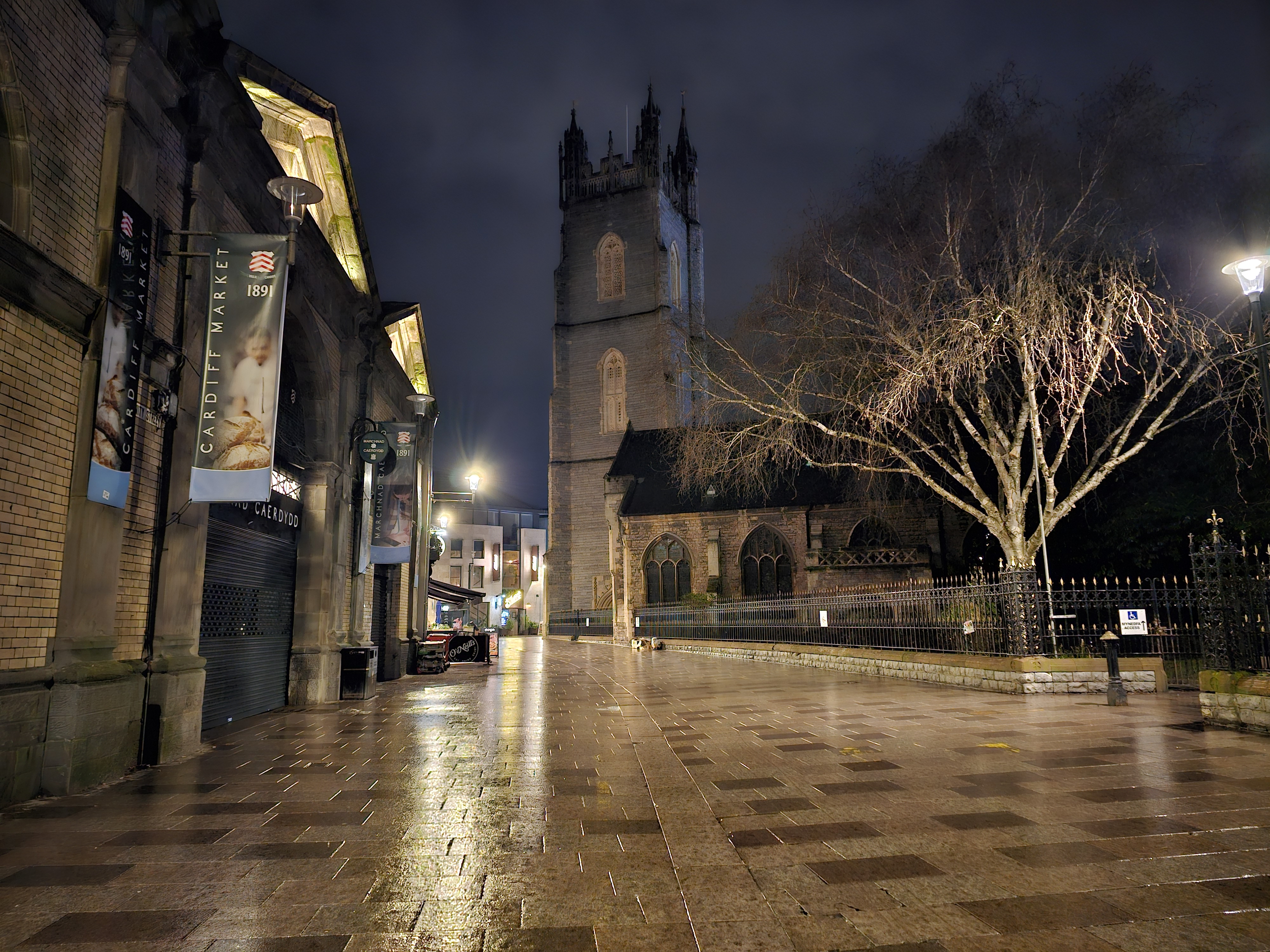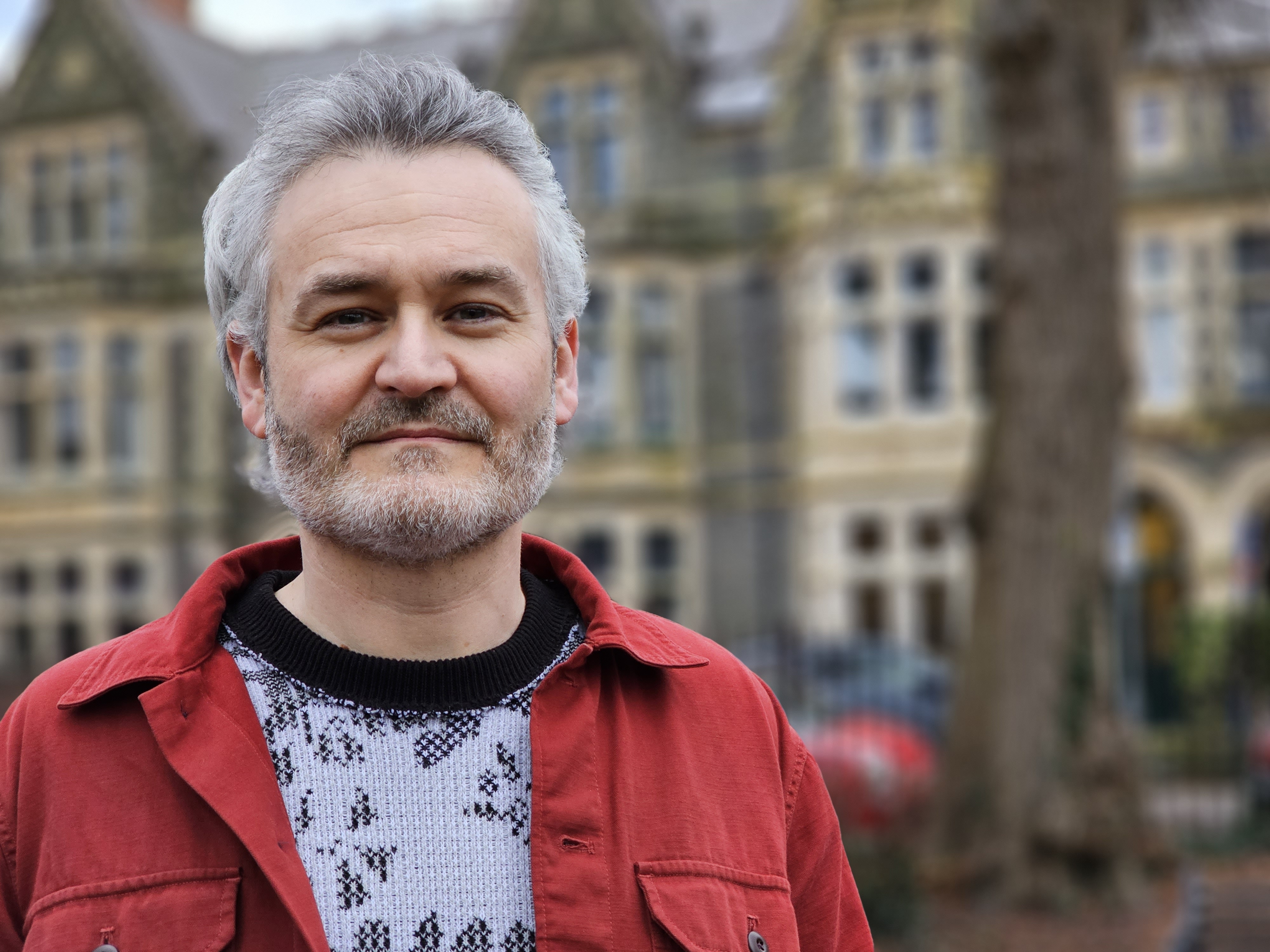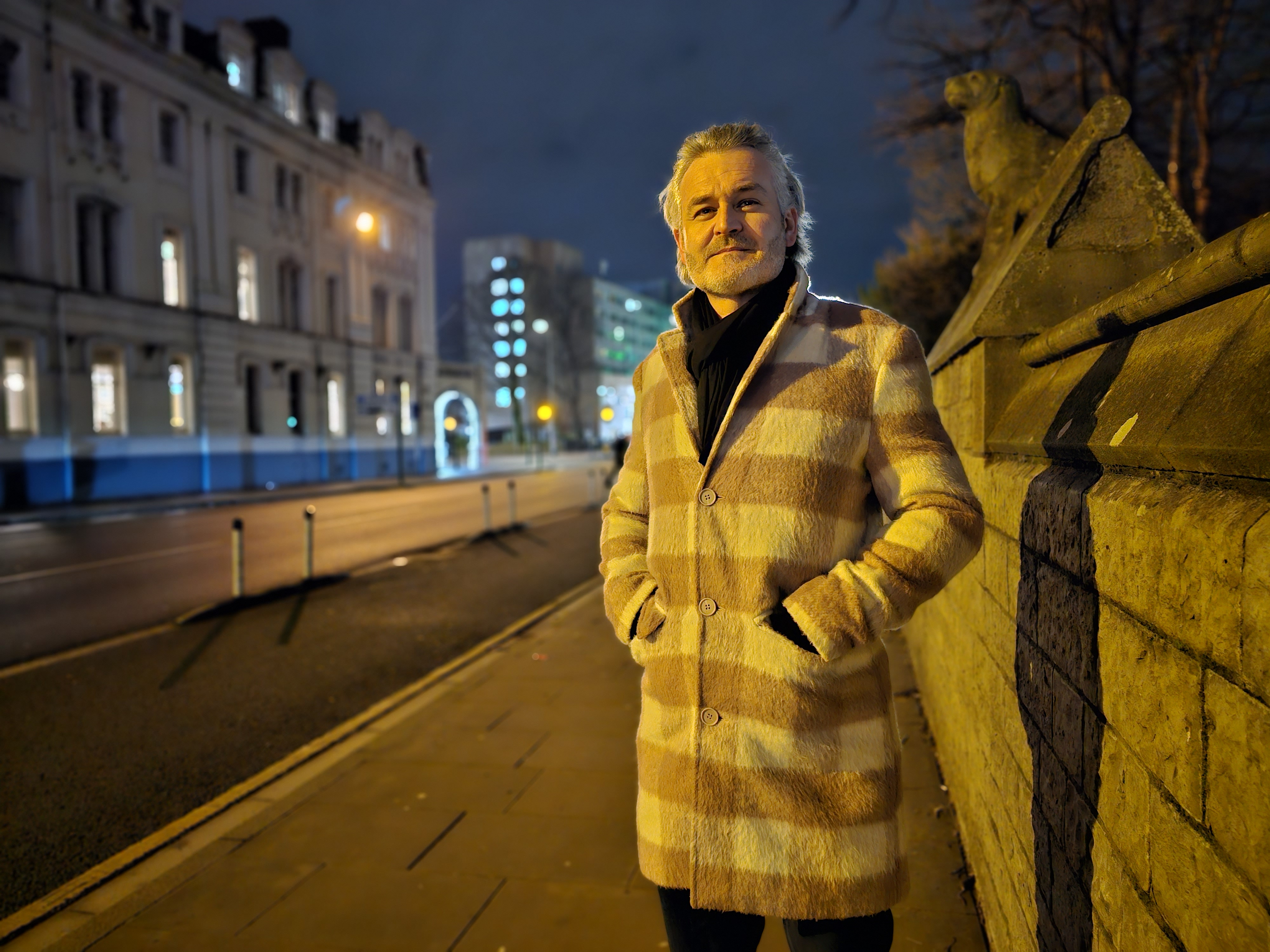Amateur Photographer verdict
The Samsung Galaxy S23 Ultra is a fantastic all-rounder that copes well in a variety of situations and comes with a well-featured native camera app.- Excellent display
- Four lenses
- 8K video
- Versatile native camera app
- Expensive
- Awkward size
- Only a gentle upgrade from predecessor
For a time, the Samsung Galaxy S23 Ultra quite simply ruled the roost. Its quad-camera setup and 200MP maximum resolution were a big step forward not just for Samsung Galaxy handsets but for smartphones in general, and it shot straight to the top of our list of the best phone for photographers. It was the camera phone to beat in our view.
The Samsung Galaxy S23 Ultra made its debut in February of 2023, and things move fast in the smartphone world. A number of new handsets from big players have risen up to challenge Samsung for the crown. Apple introduced its latest versions of iPhones, with the top-end iPhone 15 Pro Max sporting a 5x zoom lens using a tetraprism design, for great image quality with a maximum focal length of 120mm. Google took the wraps off the Google Pixel 8 Pro, bringing in AI-powered features like “Best Take” and “Magic Editor” to enable all sorts of post-capture wizardry.
The advent of the Samsung Galaxy S24 saw prices for the S23 series drop favourably. That, too, is history now that the company has made its new One UI 6.1 update available* to it, which has seen its prices soar again. Relevant to photographers are the edit suggestions for photos. It also uses Generative AI to power generative film for anybody who wants to do that.
* There have been early reports from consumers of problems after downloading this update – enough to take them seriously. We recommend prospective buyers do their own research on these before purchasing the S23 Ultra for this new option.
This aside, is it a better buy than other, newer phones? Could an older Samsung like the Samsung Galaxy S22 Ultra still represent better value for money? That’s what we aim to determine as we dive into our Samsung Galaxy S23 Ultra review.
At a glance:
- 200MP wide camera, 1/1.3” sensor, f/1.7 aperture, multi-directional PDAF, OIS
- 12MP ultra wide camera, 1/2.55” sensor, f/2.2 aperture, Dual Pixel PDAF
- 10MP telephoto camera, 1/3.52” sensor, f/2.4 aperture, Dual Pixel AF, OIS, 3x zoom
- 10MP telephoto camera, 1/3.52” sensor, f/4.9 aperture, Dual Pixel AF, OIS, 10x zoom
- ‘Space Zoom’ – 30x/100x super resolution digital zoom
- 8K video 30fps, 4K video 60fps
- 6.8-inch display, Quad HD+ (3088 x 1440) AMOLED at 500ppi, 120Hz
- Operating system – Android 13
- Processor – Snapdragon 8 Generation 2 Octacore
- 8GB/12GB memory, 256GB-1TB capacity
- Price: $900 / £770 (256GB)
Hardware, Design and Features
The Samsung Galaxy S23 Ultra, which follows on from the previous year’s S22 Ultra, doesn’t evolve the device too much, though once again it contains an array of excellent features that should be very appealing to the enthusiast photographer.
The big news is the jump in resolution count for the main camera, with the S23 Ultra being the first Samsung to boast a 200 megapixel sensor. We have seen smartphones with this size of sensor before, indeed, Samsung has previously made sensors of this resolution for other manufacturers, but this is the first time the company has put one in its own branded phones. That means you get a boost from the previous year’s 108 megapixel device.
As we’d expect, image output is not at 200MP by default, although you can shoot in super high resolution mode if you really want to. Thanks to pixel binning, the standard 12 MP resolution is what you’ll see and expect for almost all of your shots.
In front of the 200MP sensor is an f/1.7 stabilised lens, and there are three more lenses available to choose from. There’s a 12MP ultra wide f/2.2 combination, and two telephoto lenses, both with 10 megapixel sensors behind them. One offers 3x zoom and an f/2.4 lens, while the other is a 10x zoom with an f/4.9 aperture. There’s also ‘space zoom’ – a form of digital zoom that means you can reach 30x or 100x if you need it.
With four lenses available, it puts the S23 Ultra ahead of most other flagship smartphones. The Google Pixel 8 Pro and the iPhone 15 Pro Max – both newer than the S23 Ultra – have stuck with a three-lens design for their camera arrays.
As usual, a range of storage options are available to choose from, starting at 256GB and rising up to 1TB, with an appropriate bump in price each time. There’s two RAM options, with a cheaper 8GB version available to go with the 256GB storage capacity, or you can plump for 12GB with any storage option. It’s generally worth spending more if you think you’ll need the extra storage, particularly as memory with this phone cannot be expanded. It’s worth opting for the larger RAM if you can, too, particularly if you intend to shoot 8K or 4K video or use it for other non-photographic purposes, such as gaming.
Design-wise, the Samsung Galaxy S23 Ultra is very similar to its predecessor. The screen has the same specifications, being 6.8” long and with Quad HD+ resolution. This makes the phone very large and difficult to use one-handed for most people. On the plus side, it means your photos and videos really pop and look vibrant. Whether you like a very large smartphone is a matter of personal preference, but it’s perhaps a shame not to see a smaller screen device – with the same camera setup – for those who would prefer it.
The edges of the S23 Ultra have been squared off just a touch compared to its predecessor to give just a hint of a larger screen when looking at it. It’s not something that’s immediately obvious, even when looking at the two phones side by side. Either way, it’s a nicely sleek and stylish approach to design, albeit a little on the slippy side – a case is a must.
That said, if you do have a propensity for clumsiness, the good news is that not only is the S23 Ultra IP68 rated for waterproofing and dustproofing, it also features a Corning Gorilla Glass Victus 2 screen that should see it easily able to withstand scratches and dents.
Video recording is available at up to 8K resolution with an improved 30fps frame rate (24fps was available for the S22 Ultra). 8K puts it ahead of most other models on the market, though we’re starting to see this on more recent smartphones, even cheaper options such as the OnePlus 11. 4K. Full HD video recording is, of course, also available. “Super Steady” video stabilisation is only available in QHD (2560 x 1440) and Full HD, with a crop applied to video recording when Super Steady is enabled.
Just like the Samsung Galaxy S22 Ultra, the S23 Ultra is fitted with a 5000mAh battery, with the ultra large body being another benefit for long-lasting battery. We found during our tests it easily lasted a full day, even when using it frequently for photos and videos. Most of the time, it lasts for two days and even into a third day if you’re a relatively light user.
Fast charging and wireless charging are supported, but, there’s only a cable with no charger provided in the box, as is pretty common these days. If you don’t already have a fast-charging plug and/or a wireless charging device, you will need to invest in these separately.
An “S Pen” stylus was included for the first time in the Ultra range with the S22 Ultra, so it’s no surprise to see it also sticking around here. The “Note” range of smartphones is now discontinued, so it makes perfect sense that this is where you’ll find the stylus.
Primarily, the “S Pen” is positioned as being useful for making handwritten notes and doodles. From a photography perspective, you can also use the pen as a remote trigger. This comes in useful if you want to shoot selfies or group shots from a distance. Potentially, you might also use it for other scenarios, such as low light or close-up shooting from a tripod.
Camera App
Samsung smartphones have, for a long time, had a well-featured and expansive native camera app that provides lots of choice depending on the way you like to shoot.
It starts up in Photo mode, which will suit most people most of the time. In this mode, you can access all the different lenses, as well as activate digital zooming up to 100x (called Space Zoom).
In this mode, your photos will be output as standard at 12MP. But if you tap an icon at the top of the screen, you can also switch to recording in 50MP or even 200MP. Note that if you select either of these resolutions then you can only use the 1x lens (since only the sensor behind this lens has a high enough resolution sensor to facilitate this).
You can also swipe to the left to select a Portrait mode, which allows shallow depth of field effects to be created for both human and non-human subjects, while swiping to the right starts up the Video mode. If you tap on “More”, you’ll see a host of other modes that you can select, including Panorama, Food, Night, and so on.
There’s also a Pro mode that gives you control over a number of different shooting parameters, including shutter speed, ISO, exposure compensation and white balance. You can use all four of the lenses in Pro mode, and it’s here that you’ll find the ability to record in raw format. You can shoot in the standard 12MP output, or you can switch to 50MP if you’d prefer.
An “Expert RAW” app can be accessed via the “More” tab, but it is a separate app that needs to be downloaded. Tapping on it will take you to the separate app, but if the phone is locked, you’ll need to unlock it first. With this app, the parameters are pretty much the same as in the “Pro” mode, meaning you can change a variety of settings and shoot in raw format. The difference is, according to Samsung, the ExpertRAW app provides a wider dynamic range when compared to using the standard app, even in Pro mode.
It also includes other options, such as multiple exposures, and there’s handy settings like digital level to help keep your shots straight. Those with a Creative Cloud subscription can edit shots in this app using Adobe Lightroom.
Performance – Image Quality
The previous Samsung Galaxy S22 Ultra was so good that the company had to go some way to top it. The good news is that Samsung did top it. The not-so-good news is that you have to really examine the pictures to see the difference. If you’re thinking an upgrade will be a huge boost to your photography, you might be left a little disappointed.

Images directly from the Samsung Galaxy S23 Ultra’s main (200MP) sensor show more detail than last year’s S22 Ultra main (108MP) sensor. But, that’s really only obvious if you’re comparing like-for-like images shot at the same time and you zoom in closely.

Most people simply won’t do that. There’s also a very slight improvement in colours from the S23 Ultra, but again, it’s not enough to be hugely noticeable in isolation.

Overall, images display an excellent impression of detail at the standard 12MP output and stand up relatively well to close-scrutiny. Colours are rendered nicely, albeit a bit oversaturated in certain circumstances for some tastes.

The two telephoto lenses are reasonably useful, with the 3x option providing the best results. The 10x is nice to have, but it is a lot more smudgy than the others.
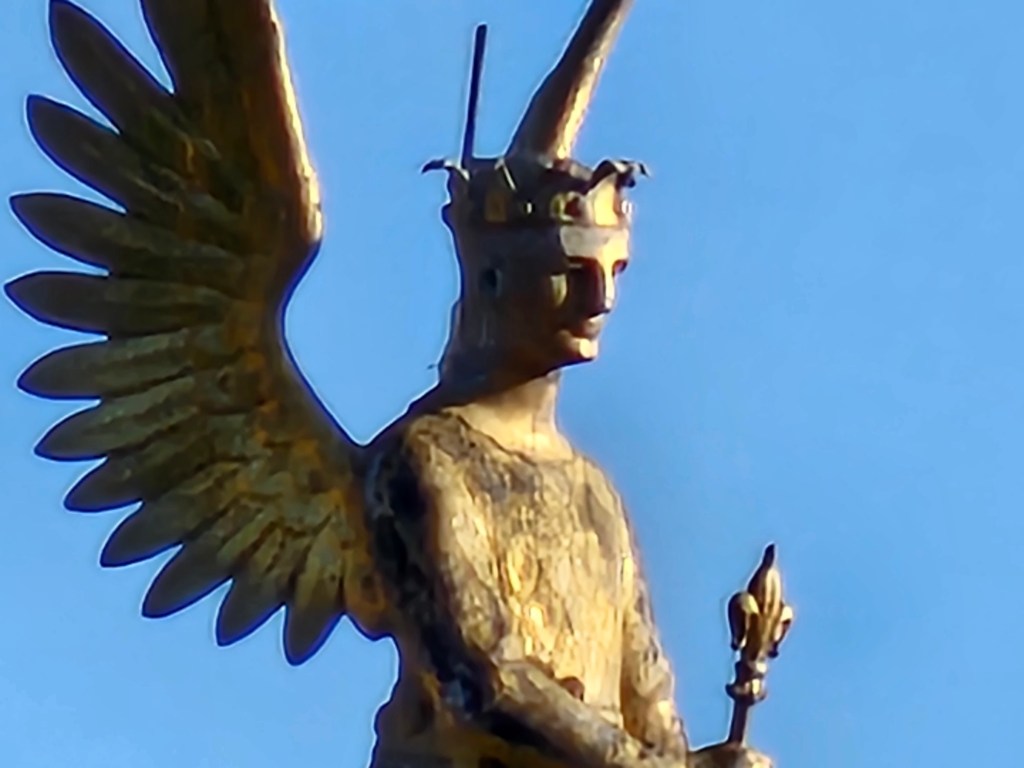
The Space Zoom is essentially a marketing gimmick. It’s not worth engaging with this feature too often unless you are absolutely desperate to get that close to a subject and can live with the blurry results.

If you shoot in the “Pro” or “ExpertRAW” app, then you’ll notice that colours are a little more muted. Colours between the different lenses are reasonably well matched, so if you are shooting from the same vantage point, you should find that all of your images look similar.

The phone also copes well with artificial light to produce well-balanced colours using its automatic white balance setting in the general Photo mode.

Shooting at 200MP is a fairly pointless exercise in most scenarios. While in some areas of a shot it does render a little more detail, it also introduces more smudging and blur in other areas. It will also leave you with huge file sizes (over 30MB, compared to around 3-5MB for most ordinary shots). Unless you want to print your images to the size of a billboard, it’s not a mode we’d recommend engaging all that frequently. It’s also worth noting that you can’t activate macro focusing if you shoot with 200MP (since it relies on the ultra wide lens), so it’s not suitable for close-ups.
As we’d expect, the standard lens yields the best results, but the others also put in a good performance.
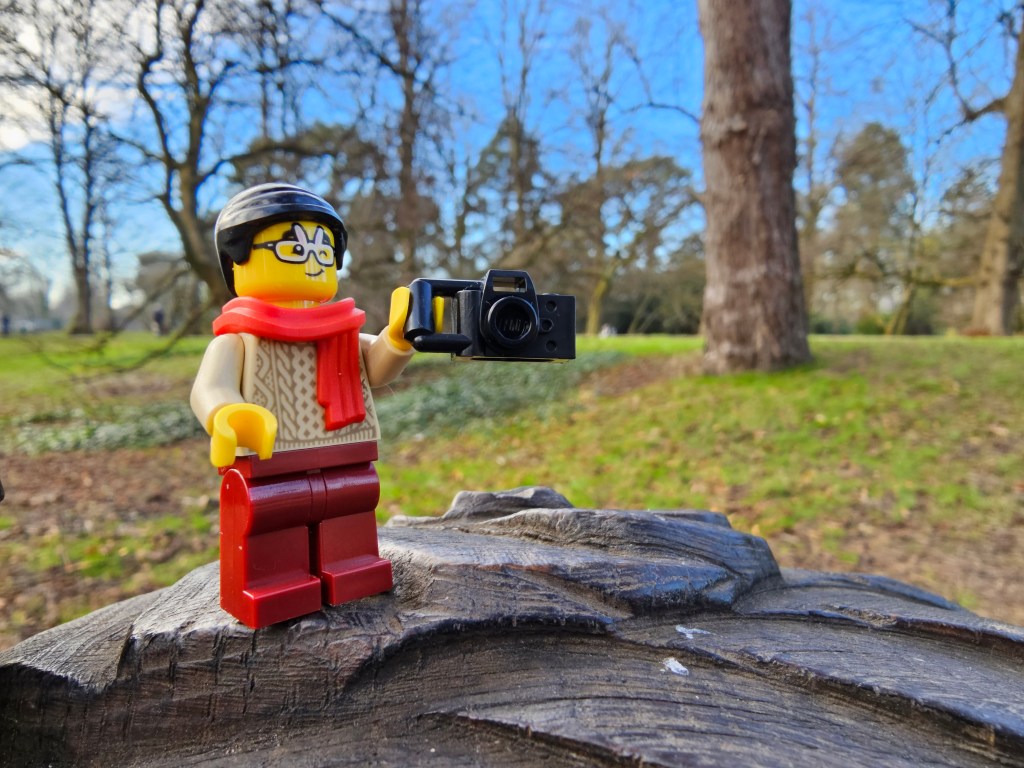
The ultra-wide is the best performer of the three additional ones, being a useful width for things such as landscapes and architecture, as well as macro shots.

Low light images are taken care of by the phone’s “Night” mode, which is both selectable and automatically activates when low light levels are detected.
Here, we see the best results from the standard lens, which produces very good images. The ultra-wide also does reasonably well, as does the 3x, while the 10x is best left alone in very dark scenarios.
The Portrait mode also does a good job of blurring backgrounds to leave a natural effect.
Night and Portrait can be used together for low-light people shots, but the 3x option here is nowhere near as good as the 1x option. There’s less of a disparity in quality when shooting in daylight / good light.
Value for Money
Remember that the Samsung Galaxy S23 Ultra was a flagship smartphone with a flagship price point to match. With the company’s latest AI tech embedded, it remains in this bracket on both counts.
It’s fair to say that you do get an awful lot for your cash: four lenses, a fantastic screen and 8K video recording. However, what you don’t get is a massive upgrade from the S22 Ultra – so if you’ve already got one of those, it’s not worth forking out here unless you like the modern tech. Alternatively, you could go for the Samsung Galaxy S23, with its triple camera setup.
If you’re updating from an older or completely different model of phone, the Samsung Galaxy S23 Ultra could be considered an investment. A smartphone this good is less likely to date as quickly as mid-range / lesser-able phones, meaning you’ll keep it for longer before swapping or upgrading. We’ve already seen this start to play out in real time, with the S23 Ultra still holding its place as one of the best options even as newer rivals arrive on the scene.
Samsung Galaxy S23 Ultra: Verdict
For our money, Samsung has retained the crown of “best smartphone for photographers” with the Samsung Galaxy S23 Ultra. This is a fantastic all-rounder which copes well in a variety of different situations and comes with a well-featured native camera app. Directly from the smartphone, images are great with lots of detail, vibrant colours and a range of focal lengths to choose from. Being able to record in raw format, use a “Pro” mode to change settings, and have all the usual smartphone modes like Portrait and Night, means there’s very little to compromise on.
Video also performs well. While 8K is not what the average consumer will need, having it available shows off exactly what Samsung can do at this level. The best results are seen at 4K or at Full HD with super smooth stabilisation switched on (if you want the smoothest results and don’t have a gimbal).
What of its main rivals? We’ve pitted this phone head-to-head with a few of its most prominent competitors, and the Samsung Galaxy S23 Ultra has consistently come out on top. In our examination of the Google Pixel 8 Pro vs Samsung Galaxy S23 Ultra, we found both phones to deliver consistently excellent images, but the Samsung handset is technically superior across the board, with an extra lens, 8K video recording, pro video modes and a larger screen.
But what of Apple? Here, the differences were even smaller – both phones produce brilliant images, time and again. In our piece on the iPhone 15 Pro Max vs the Samsung Galaxy S23 Ultra, we did admittedly slightly prefer the more naturalistic colour tones of the iPhone’s images to the ultra-poppy and vibrant colours from Samsung, particularly for portraits. With price differences between the two fairly minimal, it’s likely going to come down to which operating system you prefer – iOS or Android.
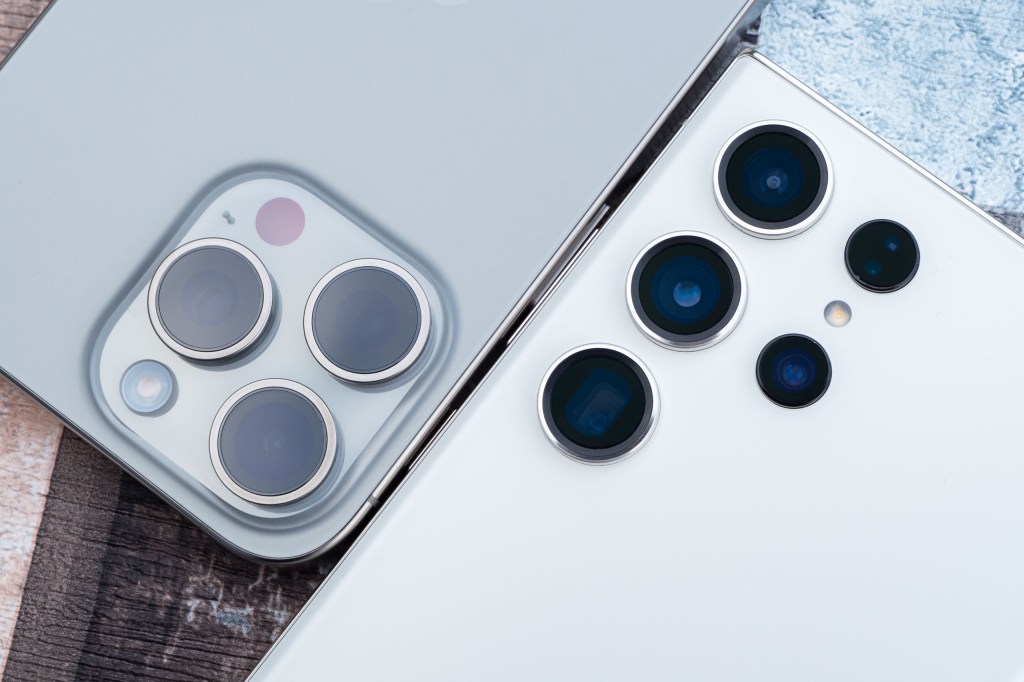
The S23 Ultra isn’t perfect. The 200MP sensor and 100x space zoom feel like little more than marketing gimmicks and are bold claims to put on a spec sheet (and corresponding advertising campaign). In real life, these features are generally wholly unnecessary. Yes, you can get lots of excellent detail out of the phone, but who is actually examining their smartphone pictures at that level of scrutiny? They look great on your phone screen, and that’s the most important thing.
Of course, all of that comes at a price – and it’s a high one. If you want the absolute best and you’ve got the cash to spend on it, then you won’t be disappointed. If you’ve already got an Samsung Galaxy S22 Ultra, don’t expect to be blown away by the difference, but if you’ve got an older phone or something else entirely, then you might consider it worth the investment.

Find more options in our guide to the best camera phones for photography.
Related articles:
- iPhone vs Android: Which is better for photography?
- Best smartphones for video in 2024
- Samsung Galaxy S23 Ultra vs Samsung Galaxy S23: Cameras Compared
- iPhone 15 Pro vs Samsung S23: Battle of the small flagships
Follow AP on Facebook, Twitter, Instagram, YouTube and TikTok.

